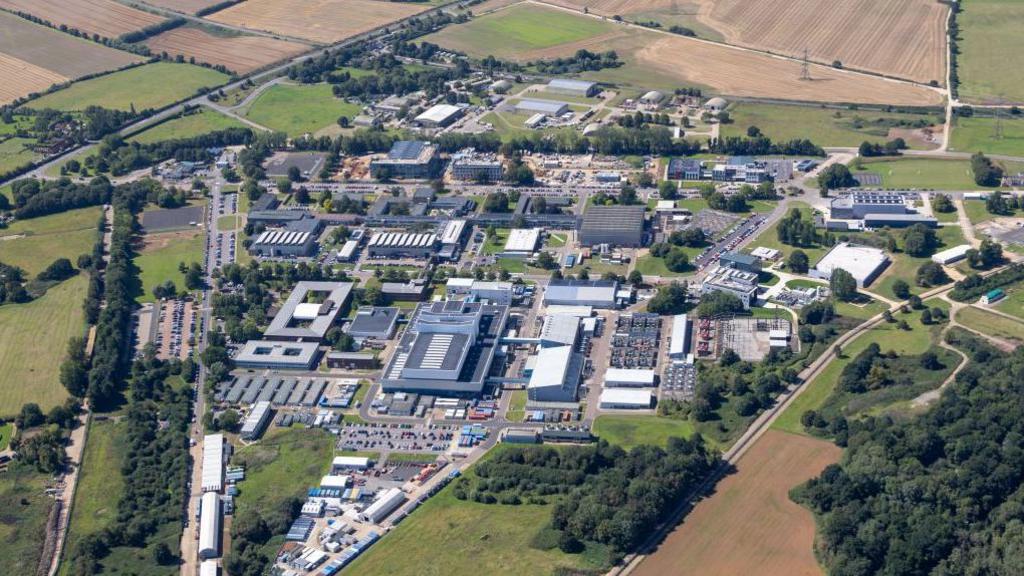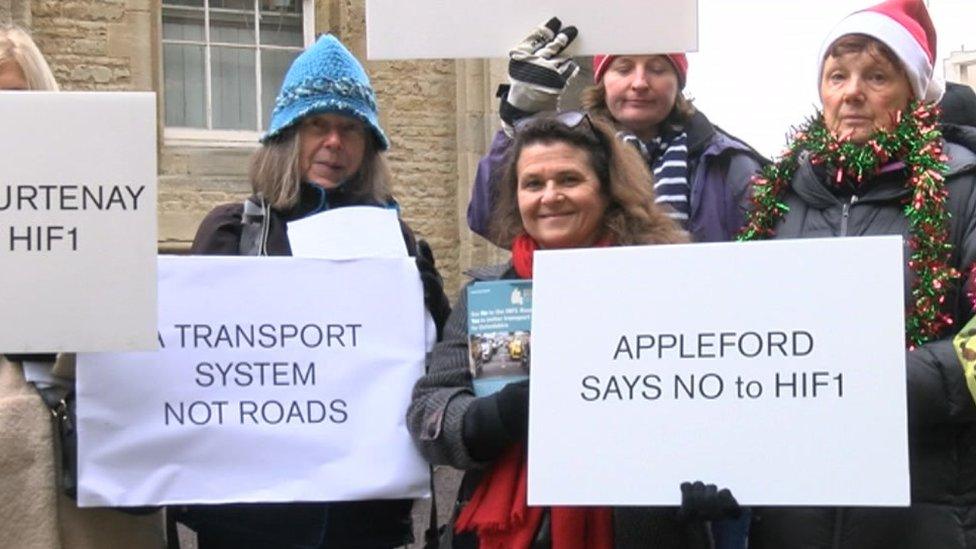Government gives go-ahead for £332m transport plan

The plan was given the go-ahead by local government minister Matthew Pennycook on Wednesday
- Published
A £332m transport infrastructure project rejected by a council last year has got the go-ahead from the government.
Oxfordshire County Council's planning committee rejected the HIF1 (Housing Infrastructure Fund 1) project in July 2023, against the advice of the authority's officers.
Part of the A4130 will become a dual carriageway from the Milton Interchange towards Didcot, two new bridges will be built and Clifton Hampden will get a new bypass.
Local government minister Matthew Pennycook approved the scheme on Wednesday following a planning inquiry earlier this year.
The council said work was expected to start in early 2026 and last for about two years.
Judy Roberts was one of seven members of the council's planning committee who voted against the application last year, with two in favour.
She was appointed the council's cabinet member for infrastructure and development strategy in October 2023 after Labour councillors quit the Lib Dem/Green coalition.
On Wednesday she said Mr Pennycook's decision was "fantastic news".
"This work is a big step towards tackling congestion in Didcot and the surrounding villages," she said.
"It will transform travel in the Didcot area for current and future residents as well as commuters, reduce congestion in the surrounding villages, and improve air quality and noise levels."

The Culham Campus-based UKAEA said the success of HIF1 was critical to its work
A new Didcot Science Bridge and road will connect the A4130 to the Collett Roundabout through the former Didcot A Power Station site.
A new Didcot to Culham road bridge will also be built between the A4130 and A415.
The UK Atomic Energy Agency (UKAEA), which is based at Culham Campus, said last year that the successful delivery of HIF1 was "pivotal" to its work.
The leaders of South Oxfordshire and Vale of White Horse District Councils, David Rouane and Bethia Thomas, were both in favour of the project.
But county council committee members said in summer 2023 that they worried about potential traffic impacts on Abingdon and Didcot and about the Science Bridge's design, among other reasons.
Last year, Chris Church, from Oxford Friends of the Earth, said the road would "generate 510,000 tonnes of carbon dioxide (CO2) in its construction".
"This is 40 times what the council produces in all its operations every year", Mr Church said.
"It's a complete tearing up of its climate commitments."
Some Green Belt land will be used for some of the project but planning inspector Lesley Coffey said the benefits of using it will outweigh the harms.
Mr Pennycook, acting on behalf of deputy prime minister Angela Rayner, agreed.
Get in touch
Do you have a story BBC Oxfordshire should cover?
You can follow BBC Oxfordshire on Facebook, external, X (Twitter), external, or Instagram, external.
- Published20 February 2024

- Published26 July 2023

- Published18 July 2023

- Published13 December 2022
